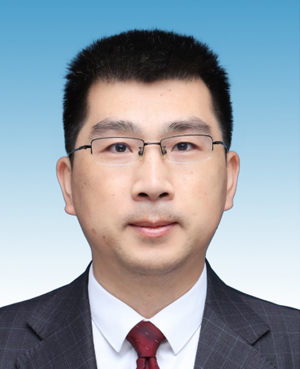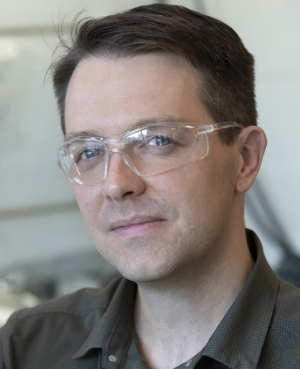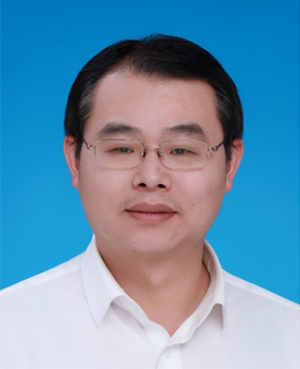
María U. Alzueta
University of Zaragoza, Spain
Bio
María U. Alzueta is Full Professor of Chemical and Environmental Engineering at the University of Zaragoza. She followed education at the same university and after postdoctoral stays at the Technical University of Denmark and the University of Ireland at Galway, she joined back the University of Zaragoza in Spain. Her research has been devoted to minimization of pollutant emissions in thermo-chemical processes, mainly combustion, focusing on NOx, SO2 and PAH and soot reduction, and conversion of non-fossil fuels. Investigation deals with both experimental and kinetic modelling work. Concerning ammonia, she has focused her work on the selective non-catalytic NOx reduction reduction (SNCR) process and the conversion of ammonia under combustion conditions evaluating the influence of temperature, pressure, oxygen stoichiometry and presence of different compounds, including pollutants, and different fuels. She is Deputy Editor of Fuel and Associate Editor of Proceedings of the Combustion Institute, as well as member of the editorial board of various journal. She is Chair or newly created Women in Combustion Advisory Committee (WICAC) and she was elected as Fellow of the Combustion Institute (2020) and since 2024.
Title
Some (almost) unique issues of ammonia combustion
Abstract
Ammonia exhibits some unique issues compared to other conventional fuels. Ammonia is a largely used raw material for the production of mainly fertilizers, but also other products. Because of its significantly high calorific value, despite that it does not contain carbon contrary to most of used fuels, it is considered nowadays as a promising free carbon fuel. Combustion of ammonia may be a challenge because of a number issues such as its difficulty in ignition and its tendency to form NOx. This talk addresses how these drawbacks can be overcome, by exploring some (almost) unique issues of ammonia combustion compared to conventional fuels.

Jong-Beom Baek
Ulsan National Institute of Science and Technology, Korea
Bio
Jong-Beom Baek is a distinguished professor/director of the Department of Energy and Chemical Engineering/Center for Dimension-Controllable Organic Frameworks, Ulsan National Institute of Science and Technology (UNIST), South Korea. After awarding his Ph.D. degree from Polymer Science, University of Akron (USA, 1998), he joined the Wright-Patterson Air Force Research Laboratory (AFRL). Then, he returned to his home country to take up a position as an assistant professor at Chungbuk National University in 2003, before moving to UNIST in 2008. His current research interests include the syntheses of two- and three-dimensional high-performance organic network structures and the chemical modifications of carbon-based materials for multifunctional applications, including energy conversion and storage. He has authored and co-authored over 290 peer-reviewed publications in the areas. He has also registered and filed over 80 international and domestic patents. Some of them have been transferred to an industry with US$1M for commercialization and also started his own company (www.ruc2n.con). Also, he is a Highly Cited Researcher since 2018 (Clarivate Analytics), Toray Science and Technology Laurate, and Academician of Korean Academy of Science and Technology.
Title
Mechanochemical ammonia synthesis (McAmmonia)
Abstract
Conventional reactions are mostly driven by heat, light, and electricity. They are named as thermochemistry, photochemistry, and electrochemistry, respectively. Likewise, chemical reaction, caused by mechanical actions, is defined as mechanochemistry, which can deliver energies required to overcome reaction barriers via abrasion, friction, cracking, colliding, and so on. The most representative tool for operating mechanochemistry is ball-milling, which can offer a new tool for ammonia synthesis. To date, ammonia has mainly been produced by the Haber-Bosch process over 110 years. However, it cannot be performed under mild conditions, because of thermodynamic reasons, requiring a large centralized manufacturing facility. Ammonia as one of most efficient hydrogen carriers, a decentralized manufacturing system is urgently developed. We have discovered a new method for the synthesis of ammonia under mild conditions (45 °C and 1 bar) via mechanochemical ball-milling iron (Fe) catalyst in the presence of nitrogen and hydrogen. With this new process, the final concentration of ammonia with potassium (K) promoter has reached as high as 94.5 vol%, which is nearly 4 times higher than the state-of-art Haber-Bosch process (~25 vol%) under harsh conditions (450 °C and 200 bar). Stable nitrogen dissociation at the mild conditions is associated with mechanochemically induced high defect density and violent impact on the Fe catalyst.

Yusuf Bicer
Hamad Bin Khalifa University, Qatar
Bio
Dr. Yusuf Bicer is an associate professor of the Division of Sustainable Development in the College of Science and Engineering at Hamad Bin Khalifa University in Doha, Qatar. His research area focuses on clean fuel production and utilization including hydrogen and ammonia. Dr. Yusuf Bicer received his Ph.D. in mechanical engineering from the University of Ontario Institute of Technology in Oshawa, Canada (2017). He completed his master’s degree in Energy Science and Technology (2014) and his BS in Control Engineering (2012) at Istanbul Technical University, Turkey. His Ph.D. thesis focused on photoelectrochemical-based hydrogen and ammonia production options.
Title
A Holistic Value Chain Assessment of Sustainable Ammonia as an Energy Carrier
Abstract
This presentation explores the various intricate aspects of the ammonia value chain, encompassing life cycle assessment, energy consumption, and economic viability especially for fossil-fuel driven economies given the real need for decarbonization. Here, we consider the complete supply chain including energy consumption associated with ammonia production, storage, transportation, and utilization. A thorough economic analysis reveals the financial implications, emphasizing the competitiveness of ammonia within the international energy landscape. Through a comprehensive life cycle assessment, the environmental footprint ammonia value chain is evaluated, aiming to align with broader sustainability objectives. Utilizing Qatar as a case study, the nation's visionary roadmap for sustainable ammonia is highlighted, showcasing its strategy to harness ammonia as a central tool for both energy transition and economic transformation. This approach also aids in diversifying the range of higher value products that can be derived from fossil sources such as natural gas. The integration of renewable energy is also explored to further enhance sustainability on the path to transitioning to low-carbon ammonia solutions.

Christian Brackmann
Lund University, Sweden
Bio
Christian Brackmann received his PhD degree in 2004 at the Division of Combustion Physics, Lund University, Lund, Sweden. Supervisor Prof. Per-Erik Bengtsson. The thesis work included development and application of laser-based methods for diagnostics in internal combustion engines and flames. The PhD studies were followed by post-doctoral and research positions at Chalmers University of Technology, Göteborg, Sweden, focused on laser diagnostics in microscopy with applications in biology and medicine, e.g. studies of metabolism and tissue engineering. In 2011 Brackmann returned to Lund University for continued research with laser-based diagnostics. He became Docent/Associate Professor in 2014 and Senior Lecturer in 2024. His current research on processes for developing a sustainable energy system includes experimental studies of combustion and other thermo-chemical processes. This has included renewable fuels and energy carriers, e.g., biomass-derived fuels and ammonia. Laser-diagnostic methods, such as Raman spectroscopy and laser-induced fluorescence, are the primary tools in these investigations for quantitative measurements of species concentrations. The research is carried out in close collaborations with expertise in modeling chemical kinetics and computational fluid dynamics. In later years, the activities have been extended with studies of development of thermal runaway in battery cells and of concepts on efficient use of biomass resources as fuel and feedstock for platform chemical and materials.
Title
Unraveling ammonia combustion with laser diagnostics
Abstract
Ammonia (NH3) has gained interest as a potential energy carrier and a carbon-free fuel during the last decade. However, NH3 combustion presents multiple challenges, e.g., in terms of flame stability and formation of pollutant nitrogen oxide species. Experimental studies are essential to gain increased understanding of these combustion processes and non-invasive laser-based methods are highly valuable tools in such investigations. This presentation outlines development and application of laser diagnostics for characterization of NH3 combustion under laminar, turbulent and plasma-assisted conditions. Studies of NH3 combustion chemistry in laminar flames are presented focusing on some key species together with development of laser/based methods for their measurement. For example, nitric oxide (NO) and nitrous oxide (N2O). Experimental results and their use in model development and validation are presented for NH3 flames at atmospheric and elevated pressure. Premixed flames under high turbulent intensity can enter the so-called distributed reaction-zone regime characterized by a broadened reaction layer and a reduced temperature gradient across the flame. Due to the low laminar burning velocity and larger flame thickness, it is easier to achieve such conditions for NH3 flames. Investigations of premixed NH3 flames at high turbulent intensity are thus of interest both from fundamental and applied perspectives. This has been carried out with multi-scalar imaging of the NH radical and NO pollutant to characterize flame propagation. Different strategies can be employed to handle challenges with ignition and stability of NH3 flames, e.g., co-combustion with hydrogen. In plasma-assisted combustion, where the flame is sustained by a pulsed discharge, the chemical reactivity is promoted by creating a non-equilibrium condition with an increased radical pool. The temporal development of this pool and interaction with the flame after discharge has been tracked in premixed laminar NH3 flames probing species such as the oxygen atom.

Ping Chen
Dalian Institute of Chemical Physics, CAS, China
Bio
Ping Chen is a professor and division head of Hydrogen energy and advanced materials, Dalian Institute of Chemical Physics, CAS. Her primary research interest is the development hydride materials for hydrogen storage, heterogeneous catalysis, and hydride ion conduction. She has more than 260 research papers published in Nature, Nature Chemistry, Nature Catalysis, and Nature Energy, etc. She serves the community as a member of Executive Committee of IEA-Hydrogen TCP, the advisory board of Chem and J Phys Chem, an associate editor of J Energy Chem, meeting chair of MRS 2011 and Gordon Research Conference 2023, etc.
Title
Hydrides catalyze ammonia synthesis and decomposition
Abstract
With a high hydrogen content (17.6 wt.%), high energy density (4 kWh kg-1), facile storage and transportation, NH3 has been regarded as a potential energy carrier. The key issue for NH3 synthesis and decomposition is the development of non-noble metal based, highly active and stable catalysts that can be operated under mild condition. Reduction of dinitrogen to ammonia needs the supply of electron and proton which hydridic hydrogen H‾ could supply; the -NxHy intermediates, on the other hand, can be stabilized by alkali or alkaline earth metal cation to lower kinetic barriers in the transformation. The inherent properties of alkali/alkaline earth metal hydrides (denoted as AH) endow them a unique functionality in mediating ammonia synthesis. We developed AH-3d metal composites and AxRuH6 complex hydrides for catalytic ammonia synthesis (A = Li, Ca, Ba etc.). These electron-rich and multi-component catalysts favor non-dissociative N2 activation and lattice hydride-involved hydrogenation. We further disclosed unique behaviors of AH under UV illumination, which enable AH catalytic functional in photo-driven ammonia synthesis.

Jun Cheng
Chongqing University, China
Bio
Professor Jun Cheng is a Distinguished Professor of Changjiang Scholar in College of Energy and Power Engineering at Chongqing University and Zhejiang University, China. He is a leading talent of National Special Support Program and a chief expert of National Key R&D project of China. His research area focuses on Carbon Neutrality, Smart Energy, Energy Storage, New Energy, Energy Saving and Environmental Protection. He has published over 350 academic papers on international journals, been authorized over 60 invention patents and got two awards of National Science & Technology Progress of China.
Title
Bimetallic active sites synergistically promote thermochemical synthesis of ammonia
Abstract
Green power energy storage such as wind and solar energy is a major national demand to promote the realization of the dual carbon goal. Recently, hydrogen production by water electrolysis, nitrogen reduction and ammonia synthesis of carbon-free fuel has been regarded as a highly competitive green and sustainable technology route. The new thermochemical synthesis of ammonia under mild conditions (≤500 ℃, ≤7 MPa) can significantly reduce energy consumption and is expected to achieve large-scale industrial production, which is of great significance for the consumption of renewable energy such as wind and solar. Due to the extremely inert N≡N bond of nitrogen feedstock, the traditional iron-based ammonia synthesis catalyst used in coal chemical industry under high temperature and high pressure conditions (500-600 °C, 10-15 MPa) has almost no reactivity under mild conditions. The precious metal ruthenium is one of the metals with the highest activity in the synthesis of ammonia, so it is often used in the literature for the thermochemical synthesis of ammonia under mild conditions in the laboratory. However, the high price of ruthenium hinders the large-scale application of ruthenium-based catalysts in the ammonia industry. Therefore, there is an urgent need to develop high-activity, inexpensive and durable transition metal catalysts for thermochemical ammonia synthesis under mild conditions. In this paper, metal-organic framework pyrolysis, dicyandiamide autocatalytic pyrolysis, and lithium-ion intercalation-exfoliation were used to gradually reduce the ruthenium loading of ammonia synthesis catalysts, improve the utilization rate of metal atoms, and realize low-cost and high-efficiency thermochemical ammonia synthesis.

Henry Curran
National University of Ireland, Ireland
Bio
Henry Curran, is a world's leading scientist in the research field of combustion chemistry, a professor at School of Chemistry, National University of Ireland, Galway, the Director of Combustion Chemistry Center, and an Honorary Professor of NPU. He is a Member of Royal Irish Academy and Royal Society of Chemistry and a Member of Board of Directors of The Combustion Institute. He is among the Top 1% of cited researchers worldwide every year since first published by Clarivate Analytics in 2014. He received Boyle-Higgins Gold Medal which was issued by the Institute of Chemistry of Ireland, and Ya B. Zeldovich Gold Medal which was issued by the Combustion Institute.
Title
A comprehensive kinetic study of ammonia combustion chemistry
Abstract
Ammonia is a promising carbon-free alternative fuel for use. The main associated challenges are its relatively low reactivity and high NOx emissions compared to conventional fuels. The co-firing strategy of blending ammonia with a more reactive combustion promoter, such as hydrogen, methane/natural gas, diesel, etc., can effectively facilitate the applications of ammonia in real engines. A detailed ammonia/hydrogen chemical kinetic model is developed over a wide range of engine-relevant conditions and comprehensively validated to describe the combustion of ammonia/hydrogen mixtures using available literature experimental data, including ignition delay times, laminar flame speeds and species concentration profiles. The new model captures very well the combustion properties of pure ammonia and ammonia/hydrogen mixtures at most conditions. The underlying chemistry controlling fuel reactivity and the formation of NOx species will be discussed. Blending ammonia with hydrocarbons leads to potential carbon-nitrogen (C–N) interaction reactions. These play an important role in governing both fuel reactivity and the ‘Thermal DeNOx’ process of ammonia/hydrocarbon blends However, there remains uncertainties regarding their detailed reaction pathways and rate constants, hampering the development of high-fidelity chemical kinetic models. High-level theoretical kinetic investigations have been performed to determine their accurate rate constants, contributing to the continuous optimization of the ammonia/hydrocarbon chemical kinetic model.

Ayman Elbaz
KAUST, Saudi Arabia
Bio
Dr. Elbaz is a Senior Research Scientist at the Clean Combustion Research Center (CCRC) at KAUST, Saudi Arabia. Since joining KAUST, Dr. Elbaz has been actively involved in cutting-edge research in experimental combustion, propulsion, and laser-based optical diagnostics for reacting flows. Dr. Elbaz holds a PhD in Mechanical Engineering from Helwan University, Cairo, Egypt, where he conducted pioneering research on low NOx gaseous burners. He also received a Fulbright visiting assistant professor grant at the Faculty of Engineering, Vanderbilt University, USA, where he worked on developing the N2O molecular tagging velocimetry technique for supersonic flow measurements. Following this, Helwan University appointed him as an assistant professor before he joined CCRC, KAUST. His research interests span a wide range of topics, including droplet combustion, flame speed, chemical kinetics, and the combustion of low-Btu fuels. Dr. Elbaz has been recognized with numerous awards, such as the Young Investigator Award from the Korea Society of Combustion Institute and the Fulbright Visiting Assistant Professors Grant. He has delivered over 5 invited keynote lectures in the fields of energy and ammonia combustion and serves on the advisory board of the Mediterranean Combustion Symposium (MCS). Additionally, Dr. Elbaz has led multiple high-impact projects funded by industry leaders such as Aramco, SEC, and ALSTOM Ltd, contributing valuable insights into combustion processes and fuel efficiency.
Title
Towards Ammonia Applications: Recent Advances in Experimental Flame Stabilization and Pollutant Emissions of Turbulent Ammonia and Blended Ammonia Flames
Abstract
Compared to traditional hydrocarbon fuels, ammonia presents significant challenges as a fuel, including high ignition energy, low reactivity, slow flame propagation, and high NOx emissions, which hinder its use as a renewable fuel. Blending ammonia with fossil fuels like natural gas improves its combustion reactivity and helps mitigate CO2 emissions. However, there is still much to understand about the complex dynamics of ammonia and its blends with hydrocarbons. Key areas such as reaction kinetics mechanisms, ignition properties, flame propagation behaviors, and methods for controlling combustion performance under various conditions require further elucidation. This lecture reviews recent advancements in experiments aimed at developing stable, low-emission combustors for ammonia-fired power generation. Recent burner and flame configurations, including non-swirling jets, single-stage swirl burners, and two-stage burners, are analyzed for their flame stability and pollutant emission potential with ammonia and ammonia blends.

Zuohua Huang
Xi'an Jiaotong University , China
Bio
Inspired by the foresight of the de-carbon requirements, Prof. Zuohua Huang has been working in the fuel ignition, laminar combustion spray combustion and turbulent combustion based on the background of gas turbines (GTs) and internal combustion engines (ICEs). He has been serving as the principal editor of the international journal Fuel during 2016-2022 for his outstanding achievements in this field. His research on ammonia mainly towards the implementation of ammonia in GTs and ICEs, including swirl flame stabilization, NOx emission control, continues and single-shot liquid ammonia spray combustion, turbulence-flame interaction as well as its auto-ignition. He published 563 papers in peer reviewed journals (including 30 ESI papers) including largely on low carbon fuels such as ammonia combustion. He was elected as the Fellow, and board of directors of the Combustion Institute. He was a highly cited scholar in Energy Field from 2014-2023. Prof. Huang was invited to give the plenary lecture in the 40th international Symposium on Combustion in Milan, Italy in 2024. He is invited by the editor of Progress in Energy and Combustion Science to share his understanding on ammonia combustion in gas turbine combustors and future prospects.
Title
Ammonia combustion towards the decarbonization in power devices: From fundamental understanding to model gas turbine combustors.
Abstract
Ammonia is a carbon free hydrogen carrier as a prospective fuel for future power devices de-carbonization, such as gas turbines and internal combustion engines. Significant efforts have been recently devoted to comprehensively understanding the fundamental combustion properties as well as combustion control techniques. This lecture starts with introduction of the recent fundamental ammonia combustion studies, including its ignition behaviors and oxidation chemistry, laminar and turbulent flames structures and turbulent flow-flame interaction. Then by using a model gas turbine combustor, ammonia flame stabilization behaviors and emission characteristics will be presented and discussed. Co-firing strategy and plasma induction on flame stabilization in swirl combustors and the combustion enhancement will also be addressed. Furthermore, a better understanding on NOx production mechanisms and emission controls over the staged combustion on NOx mitigation and other techniques will be revealed. Finally, future fundamental research issues and possible directions for ammonia fuels towards more robust, reliable, and low NOx combustion technologies relevant to gas turbines will be proposed.

Shuiqing Li
Tsinghua University, China
Bio
Prof. Shuiqing Li is a permanent professor and associate dean for the scientific R&D office at Tsinghua University. He joined the department of energy and power engineering in 2004 as an assistant professor, and prior to that, he was a postdoctoral research fellow of Tsinghua University (2002) and he received her Ph. D. degree in Thermal Engineering from Zhejiang University, respectively. He has been engaged in visiting collaborative research at the University of Leeds, the University of Iowa, Princeton University, Yale University and RWTH Aachen University. Prof. Li’s research program is supported by the National Key R&D Program of China, NSFC Distinguished youth fund, CSAA and so on. Prof. Li is currently on the editorial board of Energy & Fuels, Journal Aerosol Science and awarded as a fellow of the Combustion Institute Fellow for pioneering research on heterogeneous combustion systems, particularly on precursor reactions, particle formation and complex particle-fluid interactions. His research filed includes advanced power combustion control based on green fuels, particulate flow and heterogeneously reactive system, the interplay between experiments and computation, as well as high-performance computing.
Title
Fundamental and application research on co-combustion of ammonia and fossil fuel
Abstract
The pursuit of global carbon neutrality requires a transition to next-generation energy system predominantly reliant on renewable energy. In such a scenario, the combustion of carbon-free fuels such as ammonia plays an indispensable role in addressing the intermittency of the renewable energy. To phase down the usage of fossil fuels, the co-combustion of green ammonia is emerging as a competitive option in industrial boilers, gas turbines and so on. However, the distinct physicochemical properties of ammonia compared to fossil fuels (coal and natural gas) pose challenges to the large-scale utilization of ammonia due to the weakened flame stability and the elevated NOx propensity in combustion. This study examines the current advancements in the co-combustion of ammonia with fossil fuels. Fundamental research aims to elucidate the competition/cooperation mechanism of ammonia and fossil fuel in the process of rapidly mixing-ignition-steady combustion between fuel and oxidizer. Furthermore, it is necessary to develop accurate and fast numerical simulation model. For application, ammonia combustion requires precise control to manipulate the fuel-N transformation pathway. We demonstrate that, by nitrogen/hydrocarbon separation strategy, the clean and stable ammonia co-combustion with the coal and natural gas can be achieved in a wide range of ammonia blending ratios. We discussed the scaling laws of burner based on dimensionless number, and anticipate the integration of information technology such as artificial intelligence in the future will provide scientific support for the development of the next generation of green power generation system.

Guozhu Liu
Tianjin University, China
Bio
Dr. Guozhu Liu got his Bachelor degree from Hefei University of Technology in 2001, and Ph. D degree with Prof Zhentao MI from Tianjin University of Technology in 2006. After two years postdoc working at Tianjin University, he became an Associate Professor in 2008, and promoted to Professor in 2014. He did visiting research with prof Bill Green in MIT form 2014 to 2015. His research focuses on catalytic conversions of ammonia. He published more than 120 papers on AIChE J, CES, Fuel and so on. He got the NSFC funding of distinguish young scientist in 2020.
Title
Tailoring Ni-CeO2 Microstructures for Effective Catalytic Conversion Ammonia into hydrogen
Abstract
Ammonia, as a carbon-free hydrogen carrier, is becoming one of the key energy sources for the low-carbon development of the global economy. However, many challenges remain for its large-scale utilization, including the ammonia cracking process and the rational design of ammonia cracking catalysts. Based on this, our work focuses on the design and preparation of highly active non-noble metal nickel-based catalysts for ammonia cracking. We report Ni-CeO2 nanocomposite catalysts and CeO2/Ni inverse catalysts prepared by colloidal solution combustion synthesis and co-precipitation methods, respectively. Both catalysts exhibited high ammonia cracking conversion and long-term stability, which were superior to traditional supported Ni-based catalysts and even many of Ru-based catalysts reported in the literature. These unique structures enhance metal-support interaction and facilitate the breaking of N-H bond, the recombination desorption of N and H adatoms. This study highlights the importance of designing new structural catalysts with enhanced metal-support interaction for boosting ammonia cracking.

Kun Luo
Zhejiang University, China
Bio
Kun Luo is now a distinguished professor at State Key Laboratory of Clean Energy Utilization in Zhejiang University. He obtained his PhD degree from Zhejiang University in 2005. After completing the postdoc fellowship in Center of Turbulence Research in Stanford, he became a Full professor at Zhejiang University since 2011. He is currently the executive vice dean of the School of Energy Engineering of Zhejiang University.
His research interests are broadly on the understanding and modeling multiphase reacting flow, including gaseous, solid and spray flames, using high-fidelity numerical approaches, focusing on direct numerical simulation and large eddy simulation using advanced combustion models, such as direct moment and flamelet models. He is a recipient of National Science Fund for Distinguished Young Scholars (2019), Science Xplorer Award from Tencent (2020), First Prize of Natural Science Award of Ministry of Education (2018), and Distinguish Paper Award of the 33rd International Symposium on Combustion (2012). He is also selected as one of Elsevier’s “Highly Cited Scholars in China”.
Title
The role of high-fidelity simulations in understanding ammonia combustion and developing combustion models
Abstract
The use of fossil fuels results in significant carbon dioxide emission, posing a substantial threat to the development and safety of human society. To mitigate this issue, the use of carbon-free fuels such as ammonia should be promoted. However, ammonia combustion presents certain challenges in combustion community, such as low fuel reactivity and high NO emission. Fundamental understanding of ammonia combustion in different configurations is required to improve the design of practical combustion systems. Moreover, conventional combustion models for predicting turbulent combustion may not be valid for ammonia flames. In this talk, high-fidelity simulations have been performed to understand the underlying physics of ammonia combustion. The complex interactions between turbulence and chemistry are revealed, and the effects of turbulence on ammonia ignition and pollutant formation are explored. The modeling of ammonia turbulent combustion in the context of large eddy simulation is also focused, and new models have been proposed to improve the accuracy of ammonia combustion modeling. In addition, efforts focusing on the understanding and modeling of liquid ammonia spray and combustion have been made by benchmarking with experimental data and high-fidelity direct numerical simulation.

Alexandr N. Simonov
Monash University, Australia
Bio
Associate Professor Alexandr N. Simonov is a physical chemist specialising in (photo)electrochemistry and (photo)electrocatalysis. Research in his group is aimed at understanding and designing new effective ways to generate and use renewable electricity for the sustainable energy and chemistry technologies. His major research interests are in the development of materials, electrode architectures and electrolytic devices for generation of hydrogen through splitting of water, including seawater, reduction of nitrogen to ammonia, as well as selective oxidation of ammonia and nitrogen to nitrates for fertiliser generation. He collaborates with Australian and German industry on several projects aiming to develop new cost-effective water electrolysers. He is a co-founder of a spin-out company Jupiter Ionics Pty Ltd. working on the commercialisation of the Monash technologies for the renewable ammonia and fertiliser production.
Title
Redox-mediated reduction of nitrogen to ammonia: challenges and prospects
Abstract
Only few years of intense research have transformed the lithium redox-mediated nitrogen reduction reaction (NRR) from an essentially forgotten process presenting negligible interest to the scientific community into one of the most feasible strategies for sustainable NH3 synthesis. Apart from the plasma-based methods, the Li-mediated NRR is the only currently known process that enables electrosynthesis of ammonia from nitrogen gas at practical yield rates, and it the only process providing faradaic efficiencies close to 100 %. Notwithstanding this success, a range of fundamental and practical challenges are yet to be resolved before the redox-mediated NRR can be transformed into a technology of applied significance. Among others, instability and relatively low energy efficiency, which is thermodynamically limited to approximately 33% (under standard conditions), present major concerns. The presentation will highlight key aspects of our research on the redox-mediated NRR, which aims to resolve the above key challenges, and will present our vision on feasible pathways for future evolution of research in the field. Considerations on increasing energy efficiency of the process beyond the current thermodynamic limit will be briefly discussed.

Xin Tu
University of Liverpool, UK
Bio
Xin Tu is a Professor (Chair of Plasma Catalysis) in the Department of Electrical Engineering and Electronics at the University of Liverpool. His research mainly focuses on plasma chemistry and plasma catalysis for environmental clean-up and sustainable production of fuels and chemicals, including gas cleaning, CH4 activation, CO2 conversion, hydrogen production, nitrogen fixation and biomass/plastic conversion. He has published over 210 peer-reviewed papers (H-index 68, >13000 citations) in leading international journals, including Nature Rev. Mater., JACS and Agnew. Chem. He has delivered over 90 invited talks at major national and international conferences and has chaired and co-chaired 7 international conferences/workshops. Prof. Tu was awarded the prestigious B. Eliasson Award from the International Symposium on Plasmas for Catalysis and Energy Materials (ISPCEM) in 2014. He served as the Editor of the book “Plasma Catalysis: Fundamentals and Applications” (Springer Nature, 2019). He co-led a group of 16 leading scientists to deliver the 2020 Plasma Catalysis Roadmap (J Phys D: Appl Phys. 2020, 53, 443001, 51 pages, downloaded >31000).
Title
Plasma electrification for decentralized production of green ammonia
Abstract
Ammonia (NH3) is an essential feedstock for fertilizers and many other chemicals. It is also a flexible long-term energy carrier and zero-carbon fuel. Traditional ammonia production methods heavily rely on fossil fuels, resulting in significant carbon emissions. To address this challenge, the concept of “green ammonia” has emerged, aiming to produce ammonia through renewable energy sources and minimize its carbon footprint. This talk explores the potential of plasma electrification as a promising technology for decentralized green ammonia production under ambient conditions. Plasma, an ionized gas, contains a cascade of energetic electrons and reactive species, which can effectively break the triple bond of N2 for nitrogen fixation, offering a sustainable alternative to conventional synthesis methods. Plasma processes can be switched on and off instantly, offering great flexibility to leverage intermittent renewable energy resources, such as wind or solar power, to drive the synthesis reaction and enable the decentralized production of ammonia without relying on fossil fuels. The talk will delve into the fundamental principles of plasma electrification and its unique advantages for green ammonia production. We will discuss recent advancements in plasma electrification techniques, particularly non-thermal plasma, showcasing their potential for efficient and scalable green ammonia synthesis, as well as the challenges and future prospects of plasma electrification for decentralized green ammonia production.

Liwei Wang
Shanghai Jiao Tong University, China
Bio
Liwei Wang (L.W. Wang) is a professor in the Mechanical Engineering School, Shanghai Jiao Tong University. As the International Incoming Fellow she had worked in Warwick University in 2009 and Newcastle University in 2010. The research experience of Prof. Wang mainly focuses on the materials, cycles, and systems for energy conversion of low grade thermal energy with the technology of solid sorption. The awards she has gotten on the research work included the Second Prize of National Natural Science Award, China Youth Science and Technology Award, EU Marie Curie International Incoming Fellowship, Royal Society International Incoming Fellowship, IIR Young Researchers award, etc.
Title
Composite solid sorption for ammonia energy storage and conversion
Abstract
Ammonia is a type of high-quality energy with zero carbon emissions. Solid sorption for ammonia is an important technology to achieve efficient energy storage and conversion, but it has the disadvantages of low heat and mass transfer property, unstable sorption performance, and critical adaptability to heat source and environmental temperature. The composite solid sorption technology is researched by the matrix of conductive porous matrix. The anisotropic heat and mass transfer characteristics of thermal conductive consolidate porous matrix is revealed, and the heat and mass transfer intensification of solid sorbents are successfully realized by the anisotropic thermal conductive matrix of expanded nature graphite (ENG). The high-performance composite sorbents of halides with MOFs matrix are developed, and the non-equilibrium solid sorption kinetic models with excellent fitting characteristics are established. After that the cascading cycles with sorption concentration slip characteristics are constructed, which improved the adaptability of the technology to wide heat source temperature ranges, and the specific cooling capacity of solid sorbents is increased by 100% compared with conventional cycles. The achievements formed the novel methods for the efficient utilization of ammonia energy. Based on the achievements, the energy storage and release characteristics of solid sorption ammonia hubs will be studied in the future, which will create a new route for the large scale, safe, and efficient storage and utilization of ammonia energy.

Zhihua Wang
Zhejiang University, China
Bio
Prof. Zhihua Wang is a Qiushi Distinguished Professor at the College of Energy Engineering at Zhejiang University. He was successfully awarded the Distinguished Young Scholars Fund (2021) and Excellent Youth Fund (2014) from the National Natural Science Foundation of China. In the year of 2005, he obtained his Ph.D. degree from Zhejiang University majoring in Engineering Thermophysics. His doctoral dissertation was nominated for National Excellent Doctoral Dissertation. He is currently the deputy director of the State Key Laboratory of Clean Energy Utilization and the deputy director of the Collaborative Innovation Center for Coal-Graded Conversion and Clean Power Generation. He’s research interest is mainly focused in the area of clean and efficient combustion of fossil and zero-carbon fuels, laser diagnostic, and combustion emission control. He has led more than 20 research projects from the National Natural Science Foundation, the National Basic Research Program of China, and the Key R&D Program Projects of China. He has co-authored more than 260 papers in peer-reviewed journals with a total citation of 11,900+ times, H Index 55 from Google Scholar. He has published one English monograph with Springer Publisher, two Chinese Monographs with Chinese Science Press, and Chemical Engineering Press. He has obtained one second prize of the National Science and Technology Progress Award, one National Science and Technology Innovation Team Award, one Zhejiang Provincial Technological Invention Second Prize Award, and holdings more than 20 patents, including one Zhejiang Provincial Gold Patent.
Title
Fundamental research of NH3 Combustion and Co-firing with Coal
Abstract
Hydrogen is considered an ideal zero-carbon energy and can be generated from renewable energy like wind/solar etc., but with low energy density per volume and difficulty for long-term storage. Ammonia is preferred as a suitable hydrogen carrier because of its advantages of easier liquefication, moderate energy density, suitable for long-distance transportation, and well-developed infrastructures for storage and supply. Therefore, utilizing ammonia as a carbon-free fuel become a hot topic in the combustion community. Co-firing ammonia in the existing coal-fired power plants can utilize the existing combustion facilities and reduce CO2 emissions becomes an attractive and feasible solution. In this presentation, the fundamental research works in the area of NH3 combustion from laminar burning velocity measurement, kinetic development, and co-firing of NH3 with pulverized coal will be introduced. The experiments for premixed and staged NH3/Coal co-firing strategy in an entranced flow reactor will be introduced. NH3 co-firing performance in 135MW utility boilers will be discussed by CFD simulation. At last, the perspective and challenge of ammonia combustion in the energy system will be discussed.

Haiqiao Wei
Shenyang Aerospace University, China
Bio
Haiqiao Wei, Professor, Vice President of Shenyang Aerospace University. Prof. Wei is mainly engaged in studies on high-efficiency low-carbon/zero-carbon combustion of advanced internal combustion engines, production and utilization of renewable energy, new energy power systems, and other related areas. He has led over 30 projects including the National Distinguished Young Scientist Foundation, Key Project of Major Research Program, National Key R&D Program, and International Scientific and Technological Innovation Cooperation. He has published over 200 SCI papers in authoritative journals in the fields of energy and combustion (such as Sci. Adv., Prog. Energ. Combust., Combust. Flame, and Proc. Combust. Inst.), and holds more than 70 authorized invention patents. He has received the National Natural Science Second Prize (2020), National Science and Technology Progress Second Prize (2015), and six awards at the provincial and ministerial levels for scientific and technological achievements. He was selected for the National Distinguished Young Scientist Fund (2018), the National Hundred, Thousand, and Ten Thousand Talents Project (2019), and received a government special allowance from 2020.
Title
Recent progress in combustion and emissions of ammonia-based engines
Abstract
In the realm of global carbon neutrality, the integrated progression of green transportation and clean energy has emerged as a significant contemporary trend. Implementing carbon reduction strategies at the source, such as employing low-carbon or zero-carbon fuels, stands out as one of the most efficacious methods to mitigate greenhouse gas emissions within the transportation domain. Green ammonia, serving dual roles as a hydrogen carrier and a zero-carbon fuel, exhibits potential for deployment in heavy-duty power equipment like trucks and ships. Nonetheless, ammonia fuel's limited reactivity poses challenges including ignition complexities, sluggish combustion, inadequate emissions, and diminished efficiency in internal combustion engines. Employing high-reactivity fuels such as hydrogen or diesel as combustion enhancers represents an effective approach to rectify the combustion and emission challenges associated with ammonia fuel. This report will give an overview of the current research status, development trends, recent advancements in combustion and emissions, persisting challenges encountered in ammonia-based engines, and finally briefly introduce forthcoming development trends.

Xiaolin Wei
Institute of Mechanics, CAS, China
Bio
Prof. Xiaolin Wei in Institute of Mechanics, Chinese Academy of Sciences, has been engaged in research on clean combustion, waste heat utilization, and high-pressure combustion for about 30 years. The release behavior of alkali metals and chlorine during solid fuel combustion was investigated. The effect of halogens on NOx emission was explained by the reaction mechanism of HCl involving NOx formation. A detailed reaction mechanism was established and applied to simulate the influence of combustion free radicals on pollutants. In 2008, 1 kW experimental device was built, using CO2 as the working fluid for waste heat power generation. For the utilization of converter waste heat from high dust and CO flue gas, the effect of preheating temperature on CO gas deflagration were obtained. In 2021, the results were applied to recover all of the waste heat of converter flue gas in the first large-scale demonstration in China. In addition, the high-pressure oxygen rich combustion experimental platform has been established, and the research of advanced hydrocarbon fuel engines has been carried out. Prof. Wei was the leader of many key projects, e. g. National High Technology R & D Program (‘‘863’’Program) of China, National Key R & D Program (two projects) of China, and key project of National Natural Science Foundation of China, as well as key projects of the Chinese Academy of Sciences. He published over 200 journal articles, and granted about 100 patents. In 2000, he received the funding from the Humboldt Foundation in Germany and worked at the University of Stuttgart for two years. In 2019, he received the government special allowance of China.
Title
Ammonia clean combustion promoted by NH3/CO and catalytic reactions
Abstract
Ammonia (NH3) as a promising carbon-free fuel has attracted massive attention that aim to promote carbon peak and carbon neutrality progress. The CO/NH3 oxidation chemistry is important for the burnout in ammonia-fueled engines and turbines. Therefore, the oxidation of ammonia and NO formation during NH3/CO post-combustion is investigated. The experiments are carried out in an entrained flow reactor under different NH3 concentrations and temperatures. The present work is used to evaluate the ammonia subset of the reaction mechanism under the various conditions. The oxidation of CO is found to enhance the reaction of am monia. In addition, H2O2 may also promote the oxidation of N H3 . The experimental data under different NH3/CO ratios is also used to predict the reaction of mixed fuels of hydrocarbons and ammonia. The catalytic combustion of high concentration NH3 to produce N2 and H2O is also a prospective technology for carbon-free fuel utilization. Hence, the distinct structure-activity relationship and reaction pathways were clearly identified by designing CuO/CeO2 catalysts for NH3 reaction. During the combustion of high concentration (~10%) NH3 , the self-sustained combustion limit, NH3 conversion efficiency, the distribution of wall temperature, and combustion stability were further revealed. The kinetic model of NH3 catalytic ignition process was established. And it is found the coexistence of the Mars-van Krevelen (M–K) and Langmuir-Hinshelwood (L–H) mechanism. The M–K mechanism involves adsorbed NHx by ammonia dehydrogenation route to react with active lattice oxygen, and to produce N2 and H2O. Additionally, the contribution of L–H mechanism refers the reaction of adsorbed NHx species and chemisorbed oxygen or adsorbed HNO through oxidation route.

Rui Xiao
Southeast University, China
Bio
Rui Xiao graduated from Xi’an Jiaotong University (Xi’an, China) in 1994 and obtained both his B.S. (1997) and Ph.D. (2005) degrees from Southeast University (Nanjing, China) in Thermal Engineering. He worked as Assistant Professor, Associate Professor and full Professor in Southeast University since 1997. Now he is the Dean of the School of Energy and Environment at Southeast University, China. He is also the Cheung Kong Scholar Chair Professor and the recipient of National Science Fund for Distinguished Young Scholars. He has been a visiting professor at Kentucky University in USA and Cambridge University in UK. Prof. Xiao has published over 500 peer-reviewed papers on high-impact journals, including Science, Nature Communications, and Environment Energy & Science etc. The total citation of him is above 16,000 times and his h-index is above 65. He has been authorized more than 80 International/Chinese patents. His current research interests lie in biomass and solid waste pyrolysis and gasification for fuel, hydrogen and value-added products, fuel cell, and CO2 capture and utilization, etc..
Title
Development of transition metal nitride based composite nitrogen carrier for sustainable chemical looping ammonia synthesis
Abstract
Chemical looping ammonia synthesis (CLAS) technology is prospective to achieve the efficient storage and conversion of renewable energy under mild conditions. CLAS can decouple the conventional NH3 synthesis reaction to multiple sub-reactions, which supplies more freedom to regulate the thermodynamic and kinetic properties. The separated sub-reactions are compatible with the fluctuating and intermittent characteristics of renewable energy, and overcome the competing adsorption of N2 and H2 on catalyst surface. Owing to the huge elemental reserves, superior catalytic performance and abundant valence states, transition metals (e.g., Cr and Mn) can function as promising nitrogen carriers (NCs) to mediate redox cycles, but their CLAS activity and selectivity are still insufficient. Herein, the novel strategy of composite NCs was proposed to stimulate the CLAS performance, and the enhancement mechanism was investigated with quantitative experiments and DFT calculations. Chromium nitride doped with Co exhibited higher conversion and selectivity of lattice nitrogen to 50.7% and 98.1%, as well as the superior average rate of 466.1 μmol g−1 h−1 in 12 CLAS cycles, which is ∼10 times that of the pristine CrN. Theoretical calculations revealed that the nitrogen vacancies generated in hydrogenation served as active sites for N2 fixation through the Mars–van Krevelen mechanism. Additionally, Ni-CrN loaded on ZSM-5 supports possessed elevated specific area and CLAS rate of 41.98 m2/g and 343.1 μmol g-1 h-1, which are ~4.5 and ~1.4 times that of unsupported NCs respectively. The incorporation of Ni dopants can also enhance the bulk migration and interfacial reaction of lattice nitrogen in Mn-based NCs, where the low content of Ni (~20 wt%) can realize the optimal matching between both processes, thus promoting the activity and selectivity of hydrogenation. This work offers a novel avenue to design efficient NCs for the enhanced CLAS performance.



 loading......
loading......